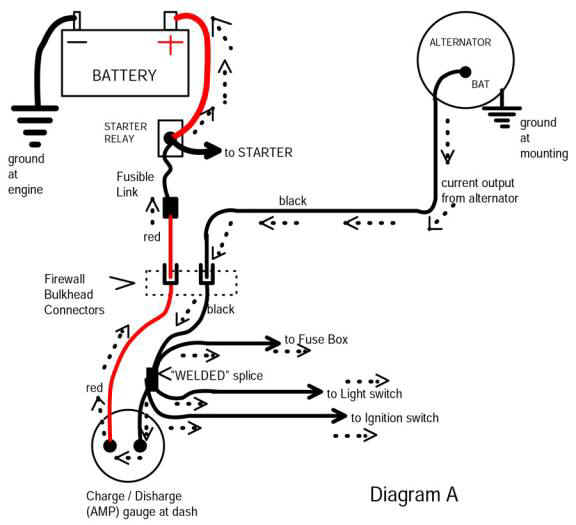Ok here's how I'd do this:
Run a TEMPORARY wire (may later be permanent) directly from the alternator output stud to the battery, use at least no10, preferably larger, no8
Now with the engine running "low / med cruise" and with time for the battery to "come up" check the charging voltage and see if it's normal.
Now check --just to be sure you don't have multiple troubles-- check the voltage drop across the ground path and the harness Do this by----
Put a probe DIRECTLY onto the battery neg. post, the other directly onto the regulator case. (engine running as above). You want a LOW reading, zero is perfect. If the reading is over .2v (two tenths) it's too high and you have a ground path problem. Add a ground wire from the firewall/ regulator mount to the block or to the battery
Next, check the drop across the positive harness. Stab a probe directly onto the battery positive post, and the other onto the regulator ignition feed. Once more, lower the better, not over .2V at the most.
Now use your head here. If this is high, it may be part of the original problem. That is, the ACTUAL voltage to ground coming out of the bulkhead from the ignition switch may be low.
NOW IS THE time to get out the diagram and do some looking
Here's the diagrams from "My Mopar." These are NOT exactly correct
http://www.mymopar.com/downloads/1969/69DartA.jpg
http://www.mymopar.com/downloads/1969/69DartB.jpg
Starting on schematic "B" follow the thick wire off the alternator output, up the page to the bulkhead connector noP. It goes to the mating connector P and off to the left of the page.
On schematic A it comes in, down, AND TO AN IN HARNESS SPLICE, the thick wire continues down the page and to the ammeter
So far the main things that could be AFU are:
A break in the wire coming off the alternator stud right inside the connector, there MAY be a fuse link in that line, and the bulkhead connector could be "done." Last, the eyelet connector at the ammeter could be broke inside, or loose right at/ in the ammeter
Also note that COMING OFF that big spice a wire going to the left FEEDS THE IGNITION SWITCH. If that splice has come loose, you will not get field current to the alternator, AND IT MAY BE INTERMITTENT, meaning that the car may start, die, start again, charge sometimes or not.
Now, back to the ammeter. notice the large red coming off, follow it out to the other page, it goes though no J of the bulkhead, on to the starter relay, and finally, the battery.
ONCE MORE we can have a bad connection at the ammeter, a broken eyelet connection inside the molded end, and a bad connection through the bulkhead, and possibly a bad fuse link
Here's a very good article from "Mad Electrical" which outlines these types of problems:
http://www.madelectrical.com/electricaltech/amp-gauges.shtml


















